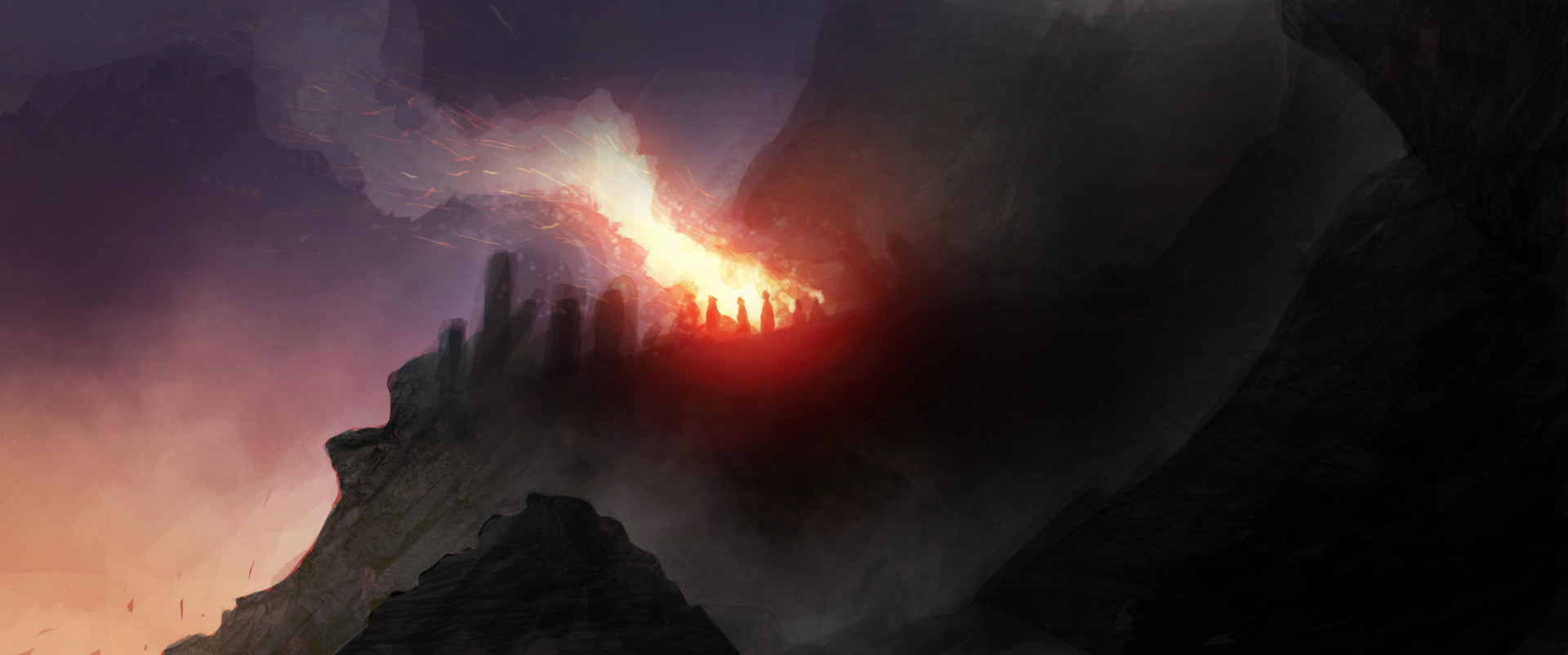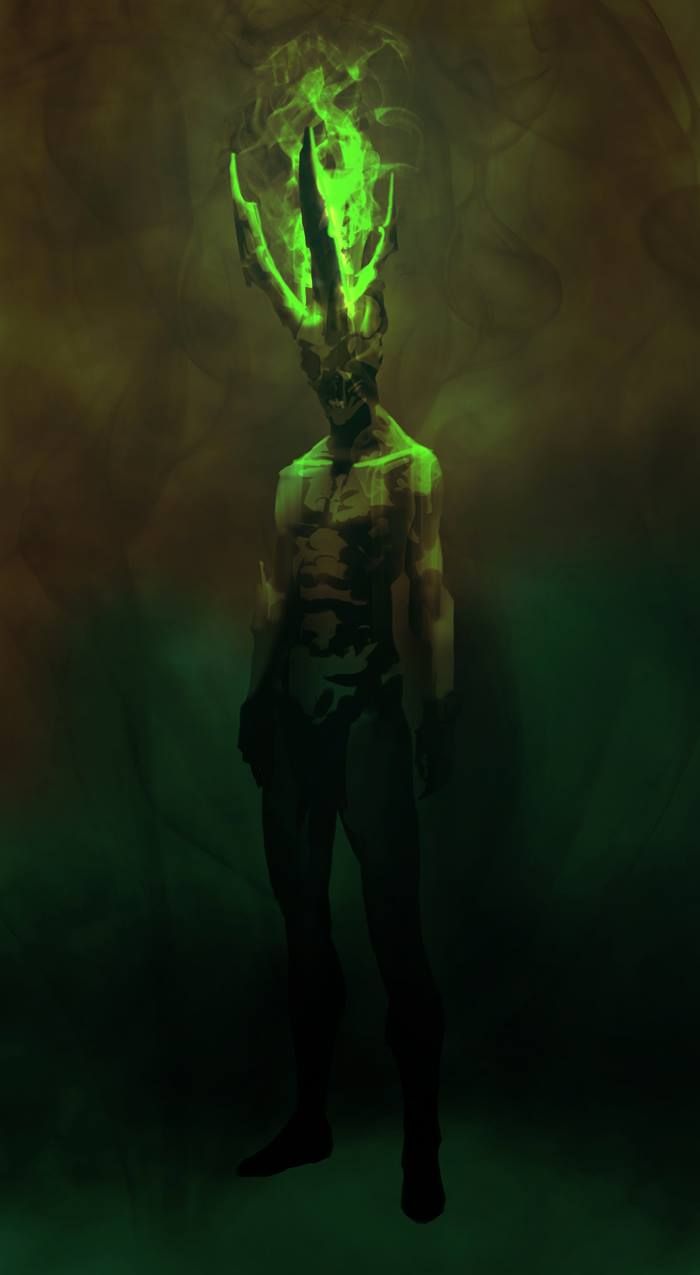Paleflame
The ghostly, freezing white-green flame fueled by the souls of the departed, relic of a bygone age
Properties
Material Characteristics
To all who bear witness to it, the Paleflame burns a cold and most chilling fire - colored white or whitish-green(Varying between interpretations) that does not scorch those or that which its flame touches, but freezes it solid, down to its very fundamental makeup and structure. A curious irregularity(And some even say physical impossibility) which paints a strange picture of the Paleflame, as otherwise its physical characteristics function very similar to normal flame: requiring fuel to burn, flickering and waning, and so on.
Physical & Chemical Properties
Paleflame burns colder than almost anything else on Zheng-Kitar - though not quite as cold as Uttercold, it nonetheless is a flame that, once ignited, flickers burns much like a normal flame would. It can ignite other materials, but rather than burning and consuming them it creates an odd reaction where, though it spreads much like flame, it completely halts and destroys the makeup of all objects on a fundamental level, freezing them down to their very fundamental structure until such things that are caught alight are left very similar to those scorched by actual, roaring heat and flame: unusable and consumed.
Secondarily, it also is said to have intense properties of "purity" and "cleansing" - capable of excising corruption and taint of all kinds, as well as purifying the souls of those slain by its freezing touch. As part of this effect, it also is useful in warding off the Undead.
Geology & Geography
Though it can be created anywhere across Zheng-Kitar, it is found nowhere naturally except perhaps The Pagan Piles - though those ancient structures are extremely few and far between in the modern day.
However, these days, it is found almost nowhere - the Paleflame, much like The Pagan Piles, are relics of an older time on Zheng-Kitar that many of its citizens view as undesirable paganism. As such, while not hunted and destroyed, they are both shunned are unfortunate relics of a time before the Advent of the Spirit Kings and the Defeat of the Sapphire Elves - a time that is seen as a failing of the creatures of the times, not the gods they worshipped; a time where poor understandings of The Soul's Journey and The Lifestream led to the development of practices seen as barbaric and "needlessly primal".
Origin & Source
Paleflame does not have a natural origin point - it is entirely a creation of the sentient races which have walked it surfaces across eons. Though the stories of its original creation have been all but assuredly lost to time with the extinction of the continent at the hands of The Yema, the Paleflame first originated as a byproduct of the first burial rites carried out by ancient Zheng-Kitarans long before the Advent of the Spirit Kings and The Six Great Ancestors' Sacrifice that brought them about, and even during and before the Defeat of the Sapphire Elves.
Life & Expiration
Once set alight, the Paleflame "burns" slower than other more convential types of fire - capable of surviving for tens or hundreds longer on the same amount of fuel as other normal fire, though it does eventual wink and sputter like any normal fire-adjacent material.
History & Usage
History
During this ancient burial rites carried out in the unfathomably old, now-defunct Pagan Piles, the dead were burned by "The Cold Deathfire" that sparked from the bones of the deceased - a burial rite that saw the corpses of the dead arranged in piles on specialized burial altars deep within The Pagan Piles and set alight, that their spirits might be set free and funneled through The Pagan Piles in which they were burned into The Lifestream itself, travelling onwards onto The Soul's Journey.
This process, though it worked, led to the creation of the Paleflame - a flame that is sparked by setting the bones of the dead alight, that draws fuel from the energies of death to freeze all it touches. However, because of the very nature of the process, the flame that burned the dead was said to "cleanse" them of their worldly impurities - and thus tended to accumulate a large amount of cursed energy as the dead who were burned left behind their grudges, resentments, hatreds, and curses behind in the Paleflame which consumed them even as their spirits traveled onwards through The Pagan Piles into The Lifestream.
Though the Paleflame proved a key, central part of the lives of ancient Zheng-Kitarans, the Advent of the Spirit Kings changed everything - once the entire continent of Zheng-Kitar had been scoured clean of all life and reborn in the hands of The Spirit Kings, the world simply never went back to the old practices, never embraced them fully as they had before as they instead began to see such practices as outdated, shunning The Pagan Piles and the Paleflame as relics of a bygone era where their ancestors turned to horridly cruel practices to return their dead to the Lifestream and the grip of The Spirit Kings. However, many scholars also theorize that the true reason Paleflame and The Pagan Piles fell out of use was, quite simply, the maturation of The Lifestream and The Soul's Journey - after The Six Great Ancestors gave their lives to allow them to manifest on the material plane, The Spirit Kings are believed to have used their experiences on the material plane to "hone" the Lifestream as one may sharpen a blade, perfecting it so as to no longer require places of power such as The Pagan Piles to funnel the dead into its clutches.
Discovery
The discovery of the Paleflame was undoubtedly made by the most ancient of creatures to walk the face of Zheng-Kitar, who had to resort to burning their dead in the hopes of the purifying their spirits to send them onto the afterlife.
Everyday use
The common uses of the Paleflame are, unfortunately, nonexistent - while its properties may prove moderately useful for the adventurer or warrior or the like, it is seen as a primitive, unwanted tool of a bygone era; the stuff of barbarism and needless cruelty.
The only place it sees use to any notable degree is in the employ of "Deadflame Hunters" and other groups that hunt out and purge the influence of the Undead - its purifying properties make it an ideal material to use in the cleansing of tainted or corrupted grounds or creatures. However, advancements in purifying spells of both divine and arcane origin are rapidly making the use of Paleflame more and more obsolete in the modern era - turning it into an identifying mark for those who cling to the old ways, where ancient "Seal Hunters" would travel far afield to purge corruptions that burn themselves onto the land.
Cultural Significance and Usage
Where once the Paleflame was regarded as the honored gateway of the dead into the afterlife, widely lauded as a great and noble thing, it is now disliked and scorned as the tool of one's primitive ancestors - a thing of interest only to historians and scholars.
Byproducts & Sideproducts
Paleflame emits no byproducts - only those normally emitted by flame, though instead of acrid smoke it simply emits a soft, freezing fog.
Hazards
Surprisingly, Paleflame is even easier to handle than normal flame - it spreads infinitely easier, but has a strange gentleness to it at times, while at others a great violence.
PF
Odor
Smells faintly of decomposition
Taste
Frigid
Color
Whitish-green or White(Depending on depiction)
Melting / Freezing Point
Cannot be frozen



Comments